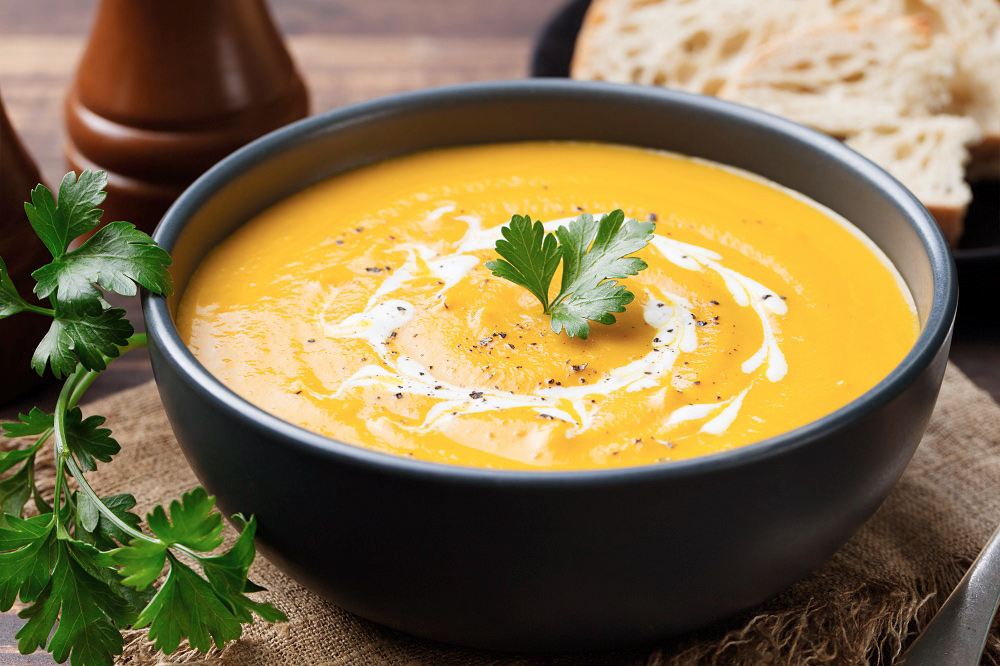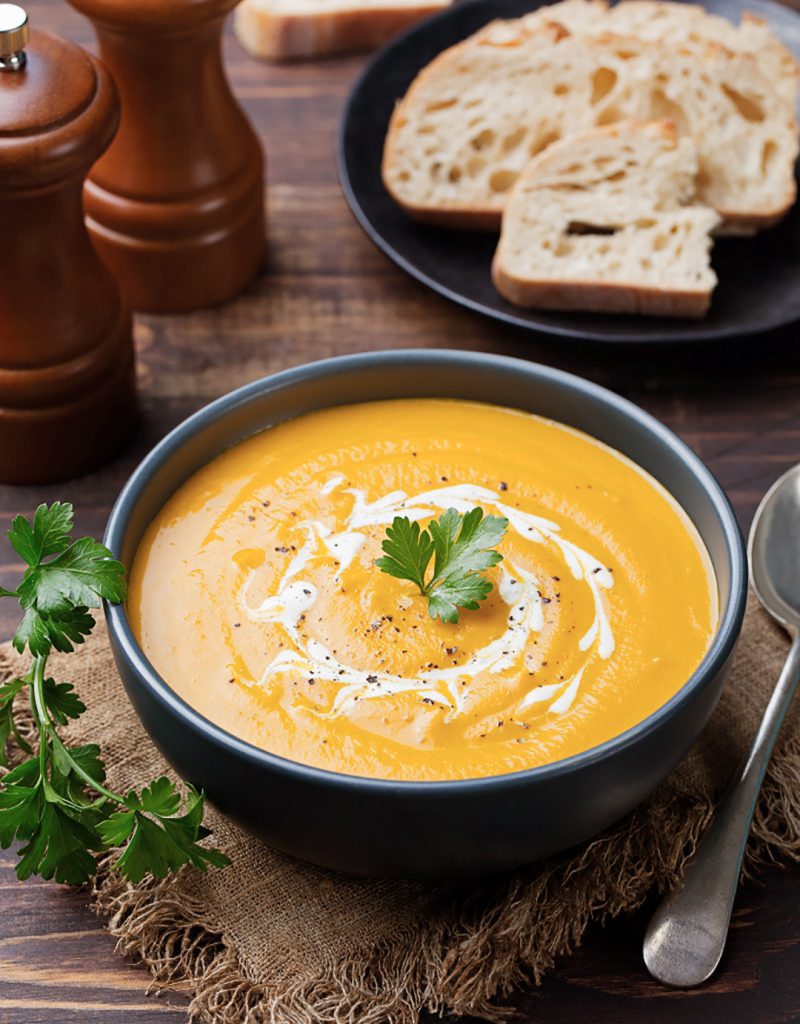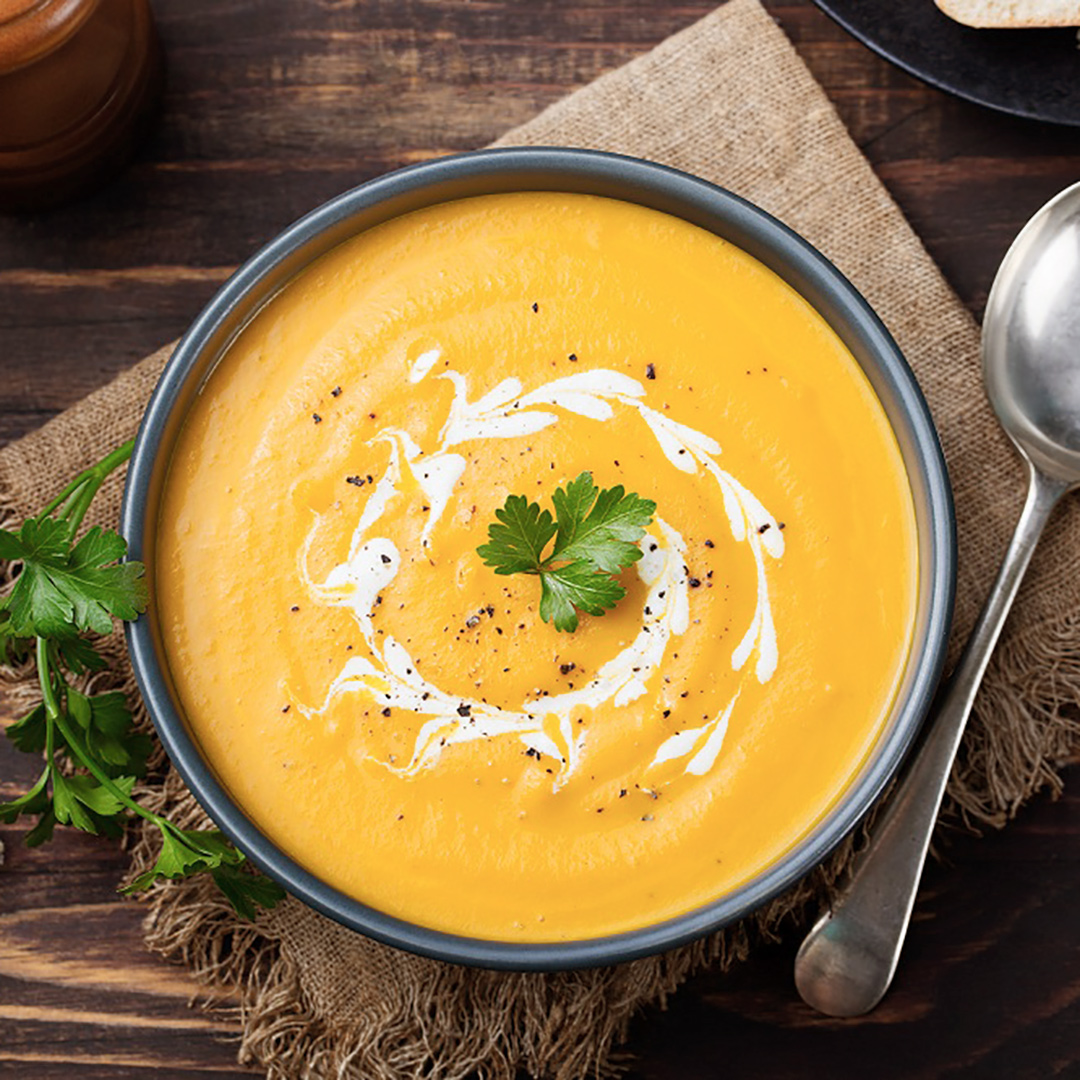
Pumpkin and carrots are loaded with beta-carotene, a known anti-inflammatory, making this an ideal recipe option to consider for those with inflammatory autoimmune diseases. Pumpkin and carrot soup is also one of the most nutritious dishes you can prepare. Find out how to do it in this guest post by Susan Conley, founder of CooktheStone.com
You don’t need to wait for fall or winter in order to enjoy a bowl of soup. Pumpkin soup, for one, is very nutritious, filling and delicious. It is a great dish to have not just for breakfast but also for lunch and dinner.
You’ll be surprised to learn that this soup is very easy to prepare, too. Plus, it’s quite obvious that this is one of the most nutrient-packed soups you can serve for your family what with the combination of two healthy foods—pumpkin and carrot.
Health benefits of pumpkin
We often associate pumpkin as a Halloween décor. In the United States, pumpkin is dismissed as a mere pie filling for Thanksgiving. But this plump orange plant is as nutritious as any vegetable out there. It is packed with vitamins and minerals yet it is very low in calories.
There are plenty of ways to incorporate pumpkin into meals. Aside from soups, you can use it for salads, desserts, and preserves. You can also utilize it as a butter substitute.
Perhaps the most popular health benefit of pumpkin is improving eye health. It is rich in the powerful antioxidant beta-carotene, which our bodies convert to vitamin A when pumpkin is consumed. Vitamin A supports good eye health, as well as vitamins C and E which are also found in pumpkin.
But aside from keeping your eyes razor-sharp, pumpkin can impact your health in other ways.
Pumpkin, for one, helps in promoting good heart health. It is packed with dietary fiber and potassium which aids in lowering blood pressure. Potassium may also lower risks of stroke and hypertension.
It might also lower risks of certain types of cancer like prostate cancer. This is due to the high levels of beta-carotene, which is a very good anti-oxidant, present in pumpkin. Numerous studies have also shown that beta-carotene may reverse colon cancer development.
 How to shop for pumpkin
How to shop for pumpkin
Since you’ll be needing a pumpkin for the soup, I might as well give you pointers on how to buy one.
In buying pumpkins, look for those with a clear and smooth textured skin. Avoid pumpkins with dark bruises as well. Pumpkins can easily rot, so the smallest of nicks would be enough to let infection in.
Pumpkins between four to eight pounds are the best in terms of taste and texture. Don’t bother getting the big ones, which are used for carving jack-o’- lanterns. These are usually bland and stringy.
Health benefits of carrots
Carrots are equally nutritious. Like pumpkin, carrots are rich in beta-carotene. This antioxidant is, in fact, responsible for the orange color of both carrots and pumpkin.
Carrots are packed with vitamins. In fact, carrots can give up to 200 percent of the recommended daily allowance for an adult. It is also high in vitamin C and B vitamins.
It is also a great source of potassium which as I have mentioned can help in controlling blood pressure. Potassium can also negate the ill-effects of sodium on the heart.
How to choose carrots
I usually buy well-shaped carrots. I avoid getting those that are soft and cracked.
The ideal color of carrots is reddish orange. It should not be colored pale orange or yellow. In fact, here’s a tip you should keep in mind— the darker the orange color of the carrot, the more nutritious it is as it contains more beta carotene.
It’s OK to have its color green. However, don’t buy carrots with dark shoulder or top because these are likely to be old.
Conclusion
Pumpkin and carrot soup is one of the most nutritious side dishes that you can serve to your family. After all, the two main ingredients are nutrition powerhouses in their own right.
This soup is also very easy to prepare so I recommend this to busy homemakers. They can feed their family members with a yummy and very healthy soup by following this recipe.
What do you think of this recipe? Don’t be shy to write in the comments section below. Susan would love to hear from you.


Be the first to comment